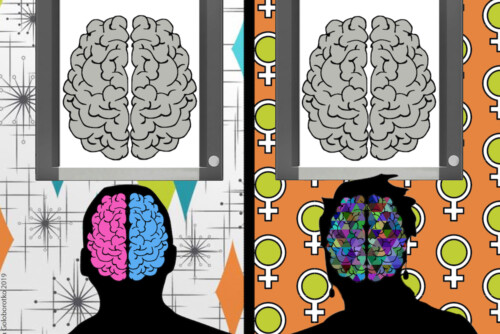“The passing faces in the streets seem [. . .] to multiply the indecipherable and nearby secret of the monument.”
– de Certeau, The Practice of Everyday Life, 15
The Monumental
I begin with some images I gathered while thinking about Patricidic Culture. Patricidic Culture is culture that depends on the production of Dead Dads – dads must die to insure that dead dads remain. Patricidic Culture is a culture invested in insuring that the dead remain, and the live pass by.

This first image is a snapshot of a statue of Lincoln teaching a statue of some modern day Dad – a tourist Dad perhaps – to read the Gettysburg Address. The statues stand outside the building in Gettysburg, Pennsylvania, where Lincoln famously wrote the Gettysburg Address on the night before delivering the speech. That’s me, standing with the statues, my fingers on the statue text. (I asked some passersby if they wouldn’t mind taking the shot. They were very nice to comply.) I couldn’t believe that the statue Dad had sneakers just like mine, only hard as rock! The plaque at our feet reads: “Return Visit.” Inserting the picture into this essay I noticed that the image makes it appear as if a flag is falling out of Lincoln’s top hat, like some magical rabbit. But, more likely, the flag was across the street. Maybe this seeming magic is what Walter Benjamin meant by the “optical unconscious” of photography – the stray details a photo can pick up that help us read for significances we might otherwise overlook (l979). 1
Of course, a Dead Dad or Founding Father, such as Lincoln, is monumental – and a stray detail, like similar sneakers or the face of the driver in a passing Volvo, is seemingly rather more random, banal, or incidental. A warning in advance of reading: As I discuss monumentality here, I sometimes purposefully confuse the monumental with the following terms: “the edifice” and “the archive.” I’m interested in the way the monumental bears a close relation to the archive (remember that monuments are erected as memorials and the archive is an oedificium of and for the remains of history). As Jacques Le Goff has written of the Western cultural mode of marking history: “History is composed of documents because the document is what remains” (xvii). According to this equation, that which is live, or that which is not given to document, disappears, does not remain, does not compose history – it passes away. We are habituated to think that the live is in some ways incidental, banal, and thus passing. And yet, the “live” so often props our monumentalized projects that to forget the live – to render it repeatedly disappeared, or to approach the live in thrall to disappearance – is to miss the crucial nexus of hand on stone, flesh on bone. To disappear the live allows the “passing” of the monument as monumental.
The passing faces in the streets seem [. . .] to multiply the indecipherable and nearby secret of the monument.
As this passage from de Certeau suggests, the “live” resolutely props the archive and the monument even as the monument and the archive depend upon the live to disappear, script the live as disappearing. Thus, as I contend in more depth elsewhere, to think of live performance as of disappearance only props this equation, and perhaps should be thought differently (Schneider 2001). To approach the live as remaining can render moot (arguably) the tired thrall to disappearance that marks modernity.

This is a picture of the Archive of the United States of America in Washington, D.C.. In Archive Fever, Jacques Derrida has written that archives are patricidic – productive of the primary mantra of archive culture: that the live disappears while that which is given to the archive remains – guarding against the very disappearance it scripts (l996). “Archive Culture” is obsessed with, intent upon, and impossibly tangled up with the illogic of “saving” – accumulating details as evidence of that which has passed. Archive Culture is culture in relation to detail as well as to monument – the saving and massive accumulation of information, the relegation of “remains” as textual, object, and evidential artifact, the determinations, via the logic of the archive, of what remains for history and what “passes” away. If we grant a relationship between monument and document, then we can read the archive as arbiter of relations between stone and flesh, tangled in a habit of culture that scripts flesh as a kind of living in excess of stone, in excess of text.
According to the logic of the archive, performance can not remain. Radically “in time,” performance can not reside in its material traces and therefore it “disappears.” In theatre studies, scholars such as Herb Blau have been formative of the “ephemeralization” of theatre (see Blau l982). 2 The definition of performance as that which disappears, continually lost in time, vanishing even as it appears, is a definition that has gathered added steam over the last 40 years (even as it is arguably a quite ancient tenet of Western culture). Such a definition is well suited to the concerns of art history, the rise of action and installation art and the pressure to understand performance in the museal context where performance and the live appears to challenge object status or monumentalism and seems to refuse the archive its privileged “savable” original. But does an equation of performance with disappearance ignore the ways in which the seeming disappearing or banal “living” detail props the edificial, monumental remain? The way, that is, that the monument as the (live, banal, ordinary) passerby are deeply entangled in a mutually constitutive relationship.
The archive is linked to the patriarchal – not simply in its etymology as “the Archon’s house” but in its logic as well. That loss as institution should make an equation that spells the failure of the bodily, the failure of performance (which is in many ways the failure of the mimetic, and by long-standing white cultural link, the feminine), to remain, is rife with a “patriarchal principle.” No one, Derrida notes, has shown more ably than Freud how the archival drive is both patriarchal and parricidic. The drive to archive is in informed by a “paternal and patriarchic principle” which, writes Derrida:
. . . posited itself to repeat itself and returned to reposit itself only in parricide. It amounts to repressed [. . .] parricide, in the name of the father as dead father. The archontic is at best the takeover of the archive by the brothers. The equality and liberty of brothers. A certain, still vivacious idea of democracy. (95)
The paradox that patriarchal culture is patricidic – depending on the production of dead fathers, killed for safekeeping into the interest of brothers – is fundamental to archival culture. Of course, this is what anthropologist Michael Taussig might call a public secret, one everyone knows, and yet one unspeakable. We are not patricidic, most Americans these days would say, we are patriotic. Yes? No? Maybe so? The drama of brothers and fathers in opposition to others is horrifyingly playing out, performed, across monuments again and again. And yet: performance disappears? What we find is that patricidal patriarchy is alive and well, and that through the patricidic, dead dads remain.
- In his 1931 essay, Benjamin writes of how the naked eye cannot penetrate all details – even quite ordinary ones – of any scene. “We have no idea at all,” he writes, “of what happens during the fraction of a second when a person steps out.” Photography, however, “reveals the secret” (1979). Thus, photography, under materialist analysis, performs a kind of talking cure through provoking explication of ordinary, generally overlooked, details. That photography also makes the “fraction of a second” available to the archive is less important for Benjamin than the analysis that, through the photo, can be performed. This final point will hopefully gain in clarity as this essay progresses.[↑]
- Richard Schechner defined performance in 1965 as “an ephemeral event” (1988). This approach to performance became a cornerstone of the emergent field of Performance Studies in the 1980s. Interestingly, ephemerality remains. Barbara Kirshenblatt-Gimblett, another longstanding member of and influential thinker in the field, employed the term “ephemeral” in 1998 claiming that: “The ephemeral encompasses all forms of behavior – everyday activities, story telling, ritual, dance, speech, performance of all kinds” (1998, 30). In 1993, Peggy Phelan, building on Herbert Blau, read ephemerality as “disappearance,” writing the often cited phrase “performance becomes itself through disappearance” (1993, 146). In an excellent 1996 essay, “Ephemera as Evidence: Introductory Notes to Queer Acts,” José Esteban Muñoz turned the table on ephemerality to suggest that ephemera do not disappear, but are distinctly material. Muñoz relies on Raymond William’s “structures of feeling” to argue that the ephemeral – “traces, glimmers, residues, and specks of things” – is a “mode” of “proofing” employed by necessity (and sometimes preference) by minoritarian culture and criticism makers (10).[↑]



